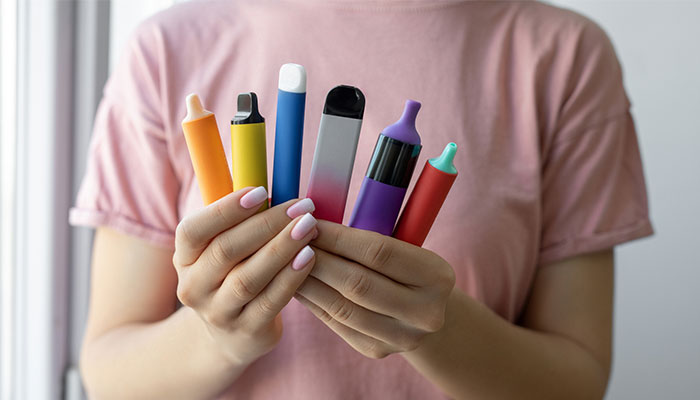The meteoric rise of vapes in recent years is a case of history repeating itself according to Woolcock Board Member and Macquarie University Professor of Respiratory Medicine Matthew Peters.

While Professor Peters, who has been a prominent voice on tobacco and e-cigarette regulation for decades, believes "the less electronic cigarettes are used by young people, the healthier they will be" he also says that until a few years ago, their greatest threat was as a "weapon of mass distraction" when it came to the main game, reducing combustible tobacco use.
That has changed since 2020, as public health resources became concentrated on fighting the COVID pandemic and a sequence of changes that effectively copied the Big Tobacco playbook to develop products that have gained a foothold across a range of age groups and demographics.
Learning From The Past
To understand how the prevalence of vaping has grown so rapidly, it's worth revisiting the history of tobacco use and smoking. From 1880 to the rise of the Marlboro Man in the 1970s, tobacco went from being dried plant material usually smoked in a pipe with the smoke held in the smoker's mouth to a fully-manufactured leaf with a range of chemicals and additives designed to deliver nicotine in pre-rolled cigarettes which require the smoker to inhale smoke deeply into the lungs.
According to Professor Peters, it's a pathway that plays directly to the mechanics of addiction – providing easy access to product, increasing social acceptability and context, rituals associated with use, sensory stimulation and rapid delivery of the agent of addiction.
Since 2018, we've seen the same thing happen with vapes.
Some young people are deceived into believing they purchase vapes that are nicotine-free; there being no nicotine label. The truth is different.
"None of those early e-cigarette delivery systems were great," says Professor Peters. "They had low nicotine content because the vapour was too harsh. They were larger, the packaging was unappealing, the start-up cost was high and they weren't commonly used or socially acceptable."
"Modern disposable vapes, on the other hand, are an exquisitely dangerous product. They're cheap and easy-to-use, they're readily available and the flavouring agents used mean they can deliver high-potency nicotine that is tolerable yet highly addictive."
On January 1 this year it became illegal to import disposable vapes into Australia but it is still legal to sell them - so they are still widely available.
At Least As Harmful As Smoking
It's clear that while the chemicals and chemical products of vapes (including a number of prohibited compounds) are different to cigarettes, the totality of harms done at a physiological and cellular level are very similar.

Despite this, vaping has increased exponentially since 2018, especially among young people, but Professor Peters says we should be careful about overstating the figures.
"It's important that we don't let young people believe that 'everyone is vaping' because, when you start saying that, use becomes normal. And we don't want this to become normalised."
Research has also shown that there is a three-fold increase in the risk of progression to tobacco use amongst those who vape and this is reflected in recent Australian figures that show a sharp reversal in the decades-long decline of smoking amongst 14-17 year-olds.
Now, public health authorities and governments around the world are scrambling to catch up with the vaping problem. In Australia, the Federal Health Minister has flagged important legislative changes that nicotine vaping products will only be available for their useful purpose, to assist some smokers quit smoking, with local supply through pharmacies with a prescription.
Nicotine-Free Is A Myth
Currently, no nicotine vaping product has been approved by the Therapeutic Goods Administration (TGA) and, according to Professor Peters, there is no circumstance under which disposable vapes could be sold legally in Australia because they do not comply with current TGA requirements under the Poisons and Therapeutic Goods Act. In any case, Minister Butler has foreshadowed a complete ban on disposable devices as is being discussed at the highest level in Wales, Scotland and Ireland.
Some young people are deceived into believing that they purchase vapes that are nicotine-free; there being no nicotine label. The truth is different - based on a University of Wollongong study, which found that out of over 700 vapes tested, only three had no nicotine.
"If it's a disposable vape, it's got nicotine and a lot of it," he says. "This is a harmful product designed for the creation of addiction. And, the product beats the person every time – that's the nature of smoking" – and vaping.
Matthew Peters is a Professor of Respiratory Medicine and a Woolcock Institute of Medical Research Board Member.
This story was first published on the Woolcock Institute of Medical Research website. The Woolcock is the leading respiratory and sleep research organisation in Australia.






